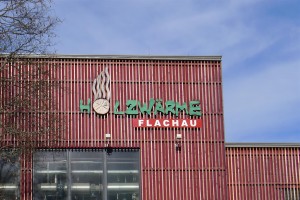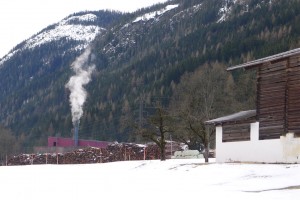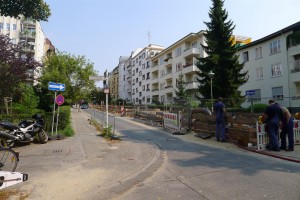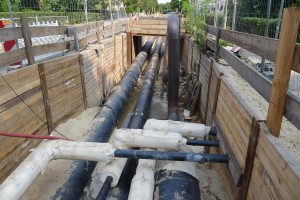[A version of this article was also posted at GreenBuildingAdvisor.com].
Annette, our daughters and I just spent a week in Flachau, Austria with Annette’s family. Flachau is not far from the Austrian city of Graz, where Annette lived until she was twelve years old. Over the years I have heard stories about Flachau, because it’s where Annette used to go skiing with her family when she was a child. I was pleased that we could give our daughters a version of the ski experience that Annette and her sisters had as children. I say “a version,” because thirty years ago Flachau was a sleepy farming village, and today it’s a bustling ski town. We had great conditions for skiing, and I am posting some photos in the Gallery section for anyone who might be interested.
 One morning Annette and I looked after our two year old nephew Jonas so that his parents — Annette’s sister Doreen and her husband Stefan — could go skiing together. We pulled Jonas in a sled along a cross-country ski trail that brought us by a large industrial building flanked by huge piles of logs and chips.
One morning Annette and I looked after our two year old nephew Jonas so that his parents — Annette’s sister Doreen and her husband Stefan — could go skiing together. We pulled Jonas in a sled along a cross-country ski trail that brought us by a large industrial building flanked by huge piles of logs and chips.
“Holzwärme Flachau” read the sign on the front of the building — Wood Heating Flachau. The building is the heart of Flachau’s “Fernwärme Netzwerk,” or district heating system. Locally sourced wood chips are burned to create hot water that is pumped throughout the village to provide heat and hot water to residents.
A few days later I was back at the facility, asking for a tour. What follows are notes and photos from that tour.



